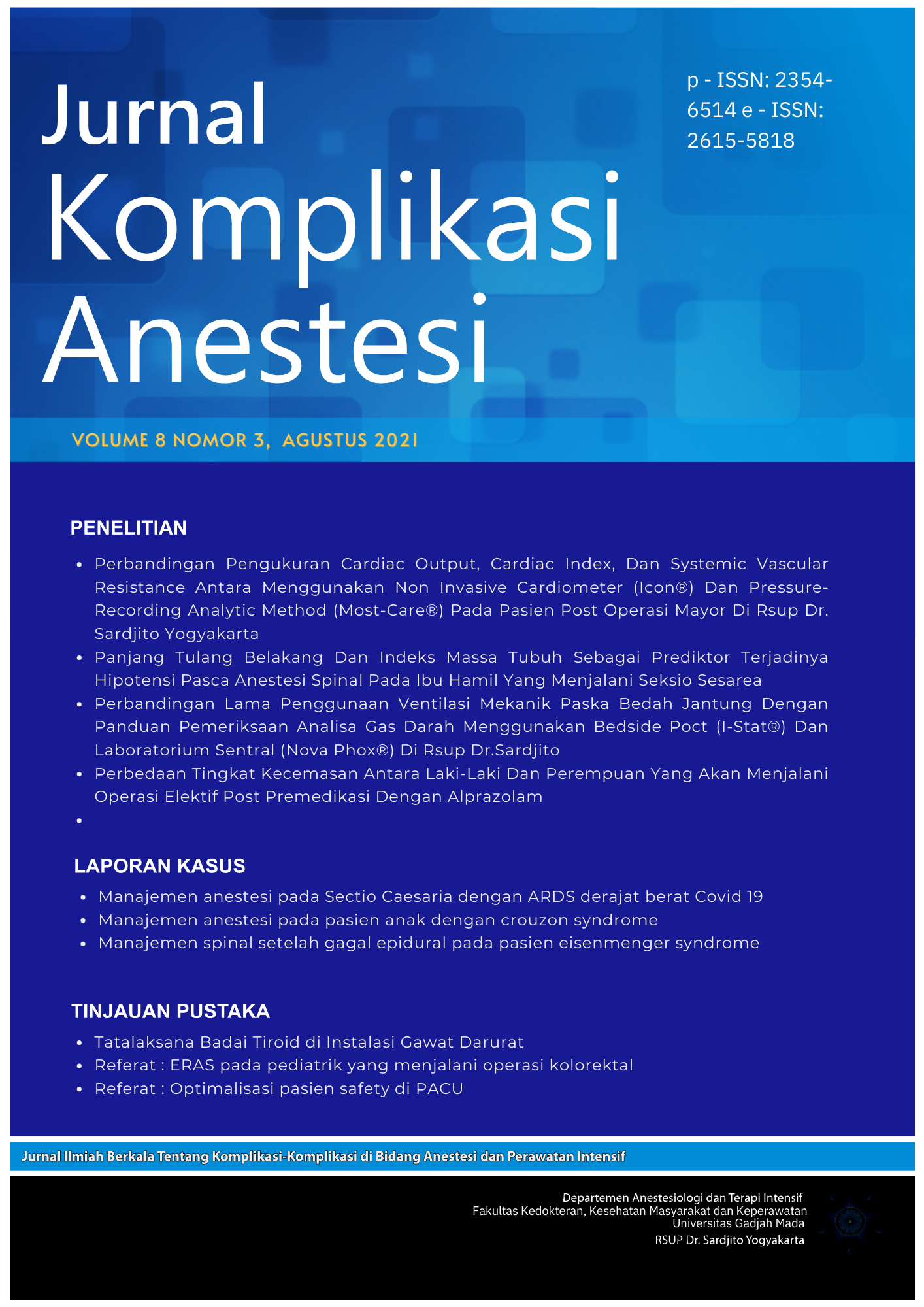Tata Laksana Badai Tiroid di Instalasi Gawat Darurat
Abstract
A thyroid storm is one of endocrinology emergency. Its incidence is very rare but has a very high mortality. Early diagnosis and aggressive treatment must be made in this case so that the patient has a good prognosis. Thyroid storm is often occurring in patients with hyperthyroidism who are not given adequate treatment and are triggered by infection, trauma, thyroid surgery, or uncontrolled diabetes mellitus. Initial treatment in Emergency Department includes assessment and management of the ABCDSs, appropriate intravenous (IV) fluid resuscitation, electrolyte replacement, precipitate factors management, and thyroid-specific therapy (include Anti Thyroid Drugs [ATDs], inorganic iodine, corticosteroid, betaAdrenergic Agonists [beta-AAs]). After getting proper treatment in Emergency Department, the patient must continue his care in the Intensive Care Unit (ICU) for clinical and treatment close monitoring. Therapeutic plasmapheresis (TPE) should be considered if clinical improvement is not noted within 24–48 hours of initial treatment.
Copyright (c) 2021 Sudadi, Bhirowo Yudo Pratomo, Wandito Gayuh Utomo

This work is licensed under a Creative Commons Attribution-NonCommercial-ShareAlike 4.0 International License.
The Contributor and the company/institution agree that all copies of the Final Published
Version or any part thereof distributed or posted by them in print or electronic format as permitted herein will include the notice of copyright as stipulated in the Journal and a full citation to the Journal.

















